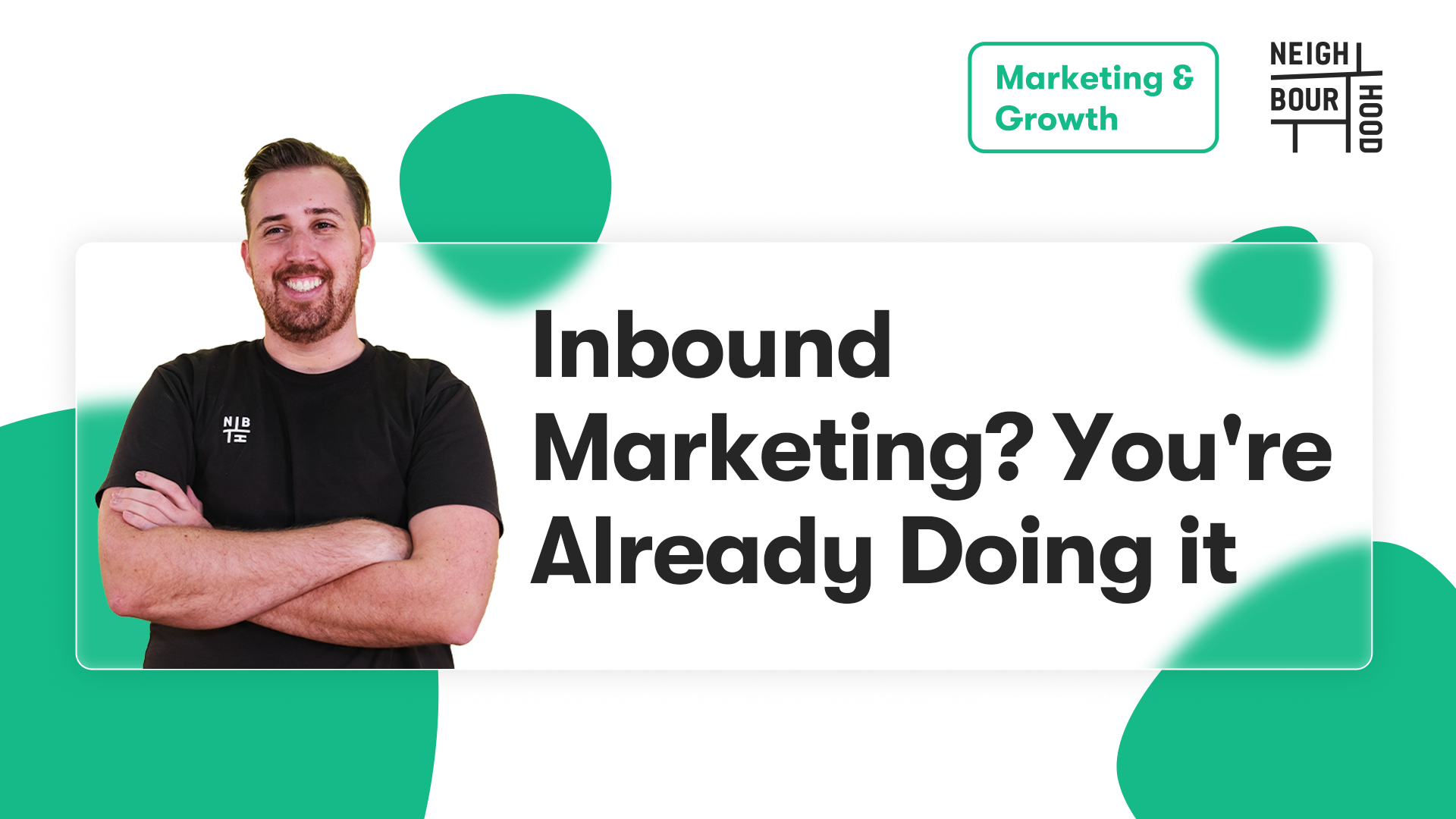We talk a big game about Inbound Marketing here at Neighbourhood. What can I say, when it works, it works. If however, you have yet to drink of our specific brand of Kool-Aid, then perhaps these numbers from the The State of Inbound 2016 (held by our good buds at Hubspot) might shed some light on our little obsession.
- For more than 3 in 4 companies, inbound is now the primary approach to marketing
- 4 times as many companies which rely on inbound strategies rated their marketing strategy as “highly effective”—just 18% of those which use outbound said the same
- 59% of marketers said their highest quality leads came from inbound strategies--just 17% said their best leads came from outbound strategies
Pretty solid, right?
OK, Those Are Persuasive Stats, but How Exactly Do I Do It?
Maybe you’ve heard about inbound marketing, but don’t really know what it is. Or maybe you’ve heard some of the buzzwords we've thrown around—like content marketing, social media marketing and SEO—but don’t quite understand what we're on about. Well, the truth is that those buzzwords might sound a little... 'market-y', but the practice of inbound marketing has less to do with insider jargon than with what you as a marketer do, every day. In fact, there’s a good chance you’re already employing some of our inbound strategies and don’t even know it.z
So, What is Inbound Marketing?
Marketing didn’t change over the past couple decades because marketers just wanted to try something new, or different. Marketing changed because consumers changed—they changed because they’ve been bombarded by marketing messaging through an increasing number of marketing channels—from telemarketing to hundreds of TV channels to infomercials and promotional emails. And all that information has made them less trusting. That’s why millions of Australians have signed up for the do-not-call registry (to avoid pesky telemarketers), and why millions of others now fast forward through TV commercials.
Inbound marketers understand this growing suspicion of traditional marketing strategies which “push” marketing messages at consumers and opt for one which “pulls” them towards purchases by gradually rebuilding trust and credibility. Hubspot defines inbound marketing—and why it works better than outbound strategies—this way:
“Inbound marketing is an approach focused on attracting customers through content and interactions that are relevant and helpful — not interruptive.
With inbound marketing, potential customers find you through channels like blogs, search engines, and social media. Unlike outbound marketing, inbound marketing does not need to fight for potential customers attention. By creating content designed to address the problems and needs of your ideal customers, inbound marketing attracts qualified prospects and builds trust and credibility for your business.”
If you're doing this, you're doing Inbound
Different inbound marketers favour different strategies, but most do at least the following 3:
1. Content marketing
“Content” is anything you create for people, things like blogs, articles, videos, podcasts, white papers and eBooks. The content you send isn’t a sales pitch—it’s information and advice that's going to help folks solve problems. When you help people solve problems, they tend to trust you and your products. Sometimes you offer people content they want in exchange for their contact information, generating more leads for your business. Later, you send more content to nurture those leads or to close sales.
If you own a real estate company and give prospects an article that tells them what fix-ups will add the most value to their current home, you’re doing content marketing. The article doesn’t hawk your company—it shows you're trying to help solve problems, which makes prospects more likely to choose you over your competitors when they look for a new home. A good content marketing guide can be a game changer, so it's worth looking into if you haven't oragised one already.
2. Search Engine Optimisation (SEO)
SEO is a pretty complicated business, one in which you make changes on your website—like adding more relevant content, or getting other companies to include links to your site on theirs, or tweaking meta-tags, or adding the right keywords—to rank higher in search engines. If you’ve added words and phrases prospects are likely to use in online searches to content on your website, you’re doing content marketing. If you’ve tried to get other businesses to link to your website, you’re doing content marketing.
3. Social media marketing
Does your business have a Facebook page, one you use to post relevant information and upcoming events for your company? Are you trying to get more followers on Twitter, or Instagram or LinkedIn? If you are, then you're a super-cool, modern company... congrats! Also, you're doing content marketing.
Sending useful content to prospects, trying to get higher rankings in Google or building a fan base on social media channels are some of the inbound strategies you might already be employing—and each, on its own, could well generate more leads, increase conversion rates and boost sales. The trick is to use the inbound strategies which are most effective–not for any business, but for your business, and to integrate those strategies into a seamless and comprehensive marketing plan. You want to use these inbound strategies in a way that hits your results out of the park.



